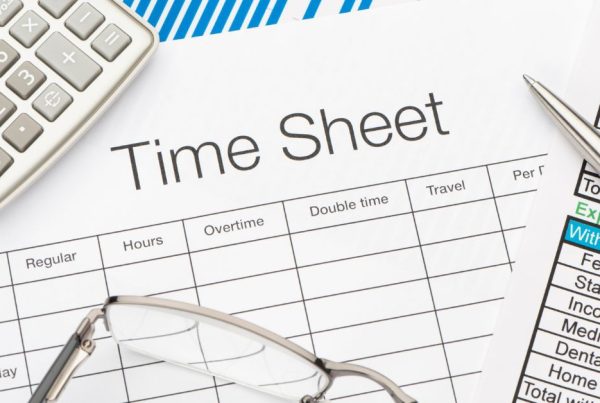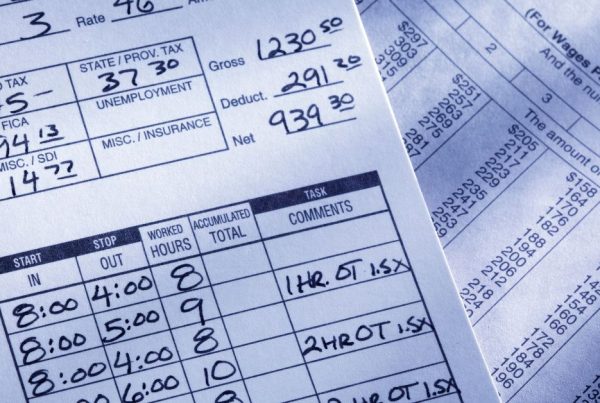
Navigating the complexities of R&D tax credits is crucial for research and development firms looking to maximize their financial incentives while ensuring regulatory compliance. Understanding eligibility criteria, maintaining meticulous documentation, and preparing for audits are essential components of this process. Leveraging technology for efficient time tracking and expense reporting not only simplifies compliance but also enhances the accuracy and reliability of records, making tools like Minute7 invaluable for R&D firms striving to stay ahead in a heavily regulated environment.
Understanding R&D Tax Credits
R&D tax credits are federal tax incentives designed to encourage businesses to invest in research and development. These credits provide a dollar-for-dollar reduction in federal and state income tax liability for qualified expenses related to the development, improvement, or design of a product, technique, process, or software. Companies can claim approximately 13 cents for every dollar spent on eligible research activities (source).
The R&D Tax Credit was initially enacted in 1981, with the primary aim of stimulating innovation and investment in development within the United States. Over time, many states have also implemented their own R&D tax credits, broadening the scope of benefits across various industries. The potential advantages of these credits include improved cash flow, increased earnings-per-share, and the ability to carry forward the credit for up to 20 years (source).
To qualify for R&D tax credits, certain eligibility criteria must be met. These criteria include: * Purpose: The activities must aim to improve the function, performance, reliability, and quality of a product or process. * Technical Uncertainty: There must be some level of technical uncertainty that the research seeks to resolve. * Experimentation: The activities must involve a process of experimentation. * Technological Nature: The activities should be based on principles of science (source).
Eligible expenses typically include wages for employees directly involved in R&D activities, supplies used during the experimentation process, and costs associated with any external services used in the research (source).
Several common misconceptions surround R&D tax credits. Some businesses mistakenly believe they do not qualify because they are not part of scientific or technical industries or because R&D is not their primary focus. However, R&D tax credits are available to companies of all sizes across a wide range of industries. Other misconceptions include the belief that the savings are negligible or that the process of claiming the credit is overly complex (source, source).
Understanding R&D tax credits is essential for R&D firms, as they offer substantial financial benefits and drive innovation. Companies like Minute7 provide efficient solutions for tracking time and expenses, aiding firms in maintaining compliance with regulatory requirements for R&D tax credits.
Key Regulatory Requirements for R&D Tax Credits
Navigating the regulatory requirements for R&D tax credits necessitates a thorough understanding of documentation, compliance with tax authorities, and audit preparation. These elements are critical for ensuring that R&D firms can secure and maximize their tax credits while adhering to legal standards.
Documentation and Record-Keeping
Accurate documentation and meticulous record-keeping are indispensable for supporting claims of qualified research expenses (QREs). QREs encompass costs associated with developing or improving products, processes, software, techniques, inventions, or formulas. To meet IRS requirements under IRC Section 41(b), firms must maintain detailed records of employee wages, supply expenses, contractor costs, and computer rentals or leasing expenses (source). It’s essential to focus on the quality rather than the volume of information, organizing it by project and on an employee-by-employee basis (source).
Compliance with Tax Authorities
To claim R&D credits, businesses must complete IRS Form 6765, Credit for Increasing Research Activities. This form requires identifying qualifying expenses and providing adequate documentation that demonstrates how these costs meet the requirements under Internal Revenue Code Section 41 (source). The IRS expects businesses to calculate their credit using both the regular credit and simplified credit methods, selecting the method that offers the greatest tax benefit. The IRS also provides audit technique guides to help businesses understand the requirements for R&D tax credits and ensure compliance (source).
Audit Preparation
Preparing for an R&D tax credit audit involves understanding the audit process and the criteria for selection. The taxpayer bears the responsibility of demonstrating that all Section 41(d)(1) requirements have been met, including documenting the technical uncertainties and alternatives evaluated. Businesses need to meticulously track employee time and wages, qualified supply expenses, contractor costs and agreements, and computer rental/leasing expenses (source). During an audit, firms should anticipate inquiries about the IRS organization, personnel involved in the audit, history of IRS guidance and projects, typical audit procedures, common problem areas, and resolution tools (source).
Minute7’s time tracking and expense reporting platform offers a robust solution for R&D firms to maintain accurate records and prepare for potential audits. By tracking time and expenses against specific customers, jobs, or projects, and syncing this information into QuickBooks for billing, reporting, or payroll purposes, Minute7 provides essential documentation for R&D tax credit claims.
Strategies for Maximizing R&D Tax Credit Claims
Efficiently tracking time and expenses is vital for maximizing R&D tax credit claims. Proper time tracking ensures that all eligible R&D activities are captured accurately, allowing firms to claim the maximum available credits. Implementing best practices for time tracking and expense reporting can significantly enhance the accuracy and reliability of records, thereby reducing the risk of audits or challenges from tax authorities. Key strategies include:
Efficient Time Tracking and Expense Reporting
Accurate time tracking is essential for R&D departments to measure the value of work done, ensure project profitability, and qualify for R&D tax credits. This involves tracking all costs, including time and expenses, associated with the research and development phase of a new product. Implementing a robust time tracking system helps streamline this process and provides the necessary information for making informed decisions on product development (source). Best practices include maintaining clear and detailed records of R&D activities, developing standardized processes and guidelines, and providing regular training to your team (source).
Leveraging Technology
Advanced software solutions can simplify and streamline R&D tax credit claims. Tools like Minute7 can automatically extract relevant information, categorize expenses, and generate detailed reports. This technology allows firms to strategically leverage R&D tax credits to maximize their benefits. Software solutions assist in identifying eligible activities, documenting R&D activities, staying updated with regulations, and optimizing the use of R&D tax credits (source). Minute7’s seamless integration with QuickBooks makes it an excellent tool for efficient time tracking and expense reporting.
Continuous Compliance Monitoring
Continuous Compliance Monitoring (CCM) is crucial for maintaining regulatory compliance. Unlike point-in-time monitoring, CCM involves a 24/7 approach to tracking, assessing, and monitoring the effectiveness of controls designed to mitigate risks and ensure consistent compliance (source). Compliance monitoring provides strategic advantages by identifying and mitigating risks, improving efficiency, and fostering a culture of accountability. It allows businesses to adjust their operations in real time and prevent violations before they occur, thereby protecting businesses from legal and financial consequences (source).
Minute7’s Role
Minute7 plays a crucial role in helping R&D firms navigate compliance for R&D tax credits. The platform’s capabilities align well with the need for continuous compliance monitoring, as it provides an efficient way for businesses to track time and expenses continuously. By leveraging Minute7, R&D firms can simplify and streamline their compliance and reporting processes, making it easier to stay compliant with changing regulations and maximize their R&D tax credit claims. Minute7’s integration with QuickBooks ensures that all tracked data is accurately synced for billing, reporting, or payroll purposes, providing essential documentation for R&D tax credit claims.
Streamlining Compliance with Minute7
Navigating the complexities of regulatory compliance for R&D tax credits can be daunting for research and development firms. However, by implementing efficient time tracking and expense reporting strategies, leveraging modern technology, and maintaining continuous compliance monitoring, R&D firms can not only maximize their tax credit claims but also ensure they remain compliant with ever-evolving regulations.
Minute7 stands out as a valuable tool in this landscape. Its seamless integration with QuickBooks and comprehensive features for time and expense tracking make it an ideal solution for R&D firms. With Minute7, businesses can efficiently track all R&D-related activities, categorize expenses accurately, and generate detailed reports necessary for tax credit claims. This reduces the burden of compliance and allows firms to focus on their core innovation activities.
By adopting Minute7, R&D firms can streamline their compliance processes, making it easier to meet documentation requirements, prepare for audits, and stay updated with regulatory changes. Ultimately, Minute7 helps businesses navigate the complex terrain of R&D tax credits with confidence, ensuring they can fully leverage the financial incentives available while maintaining robust compliance.
For more information on how Minute7 can support your R&D compliance needs, visit Minute7.



